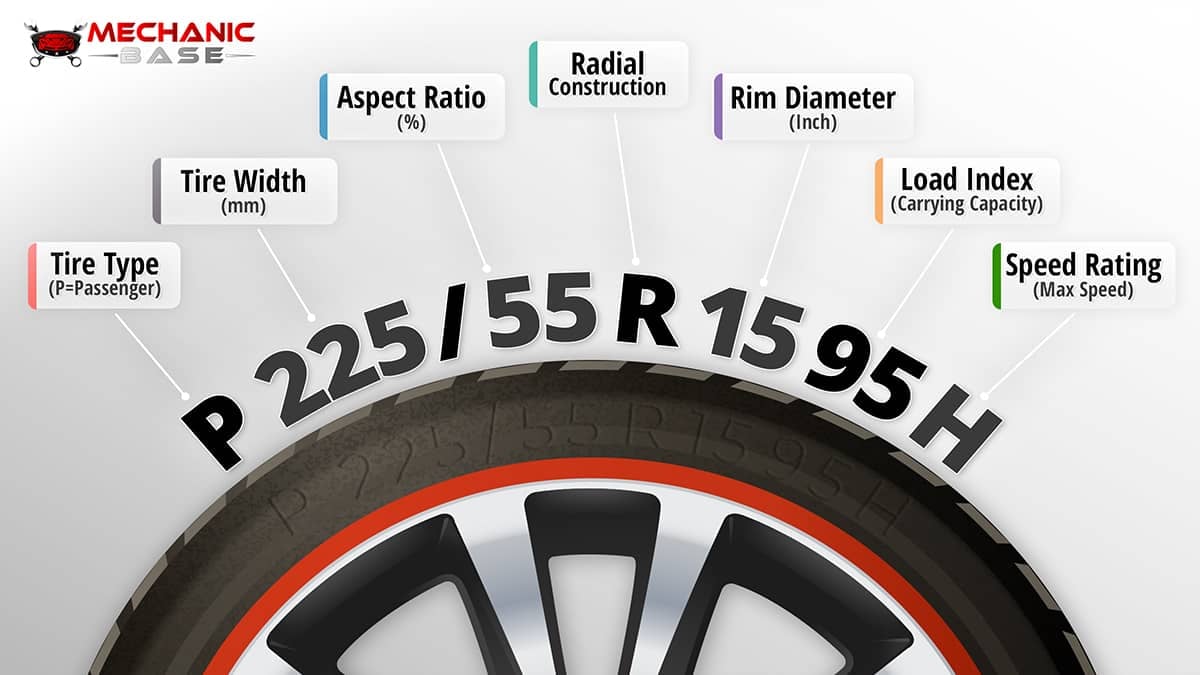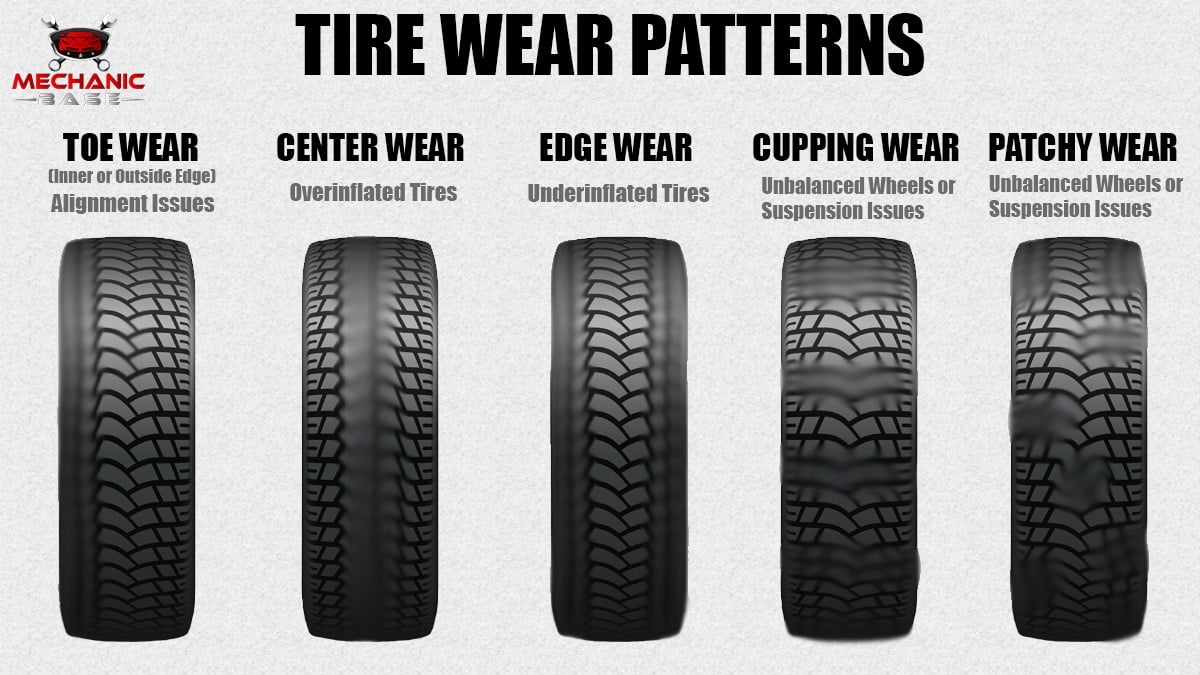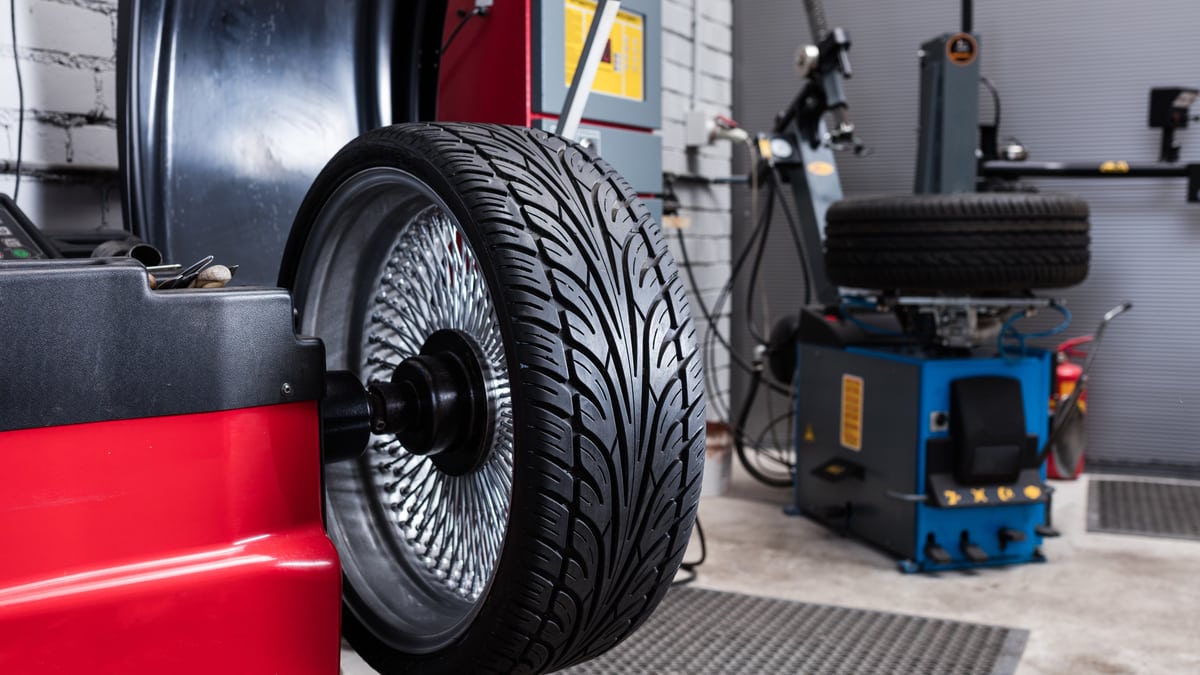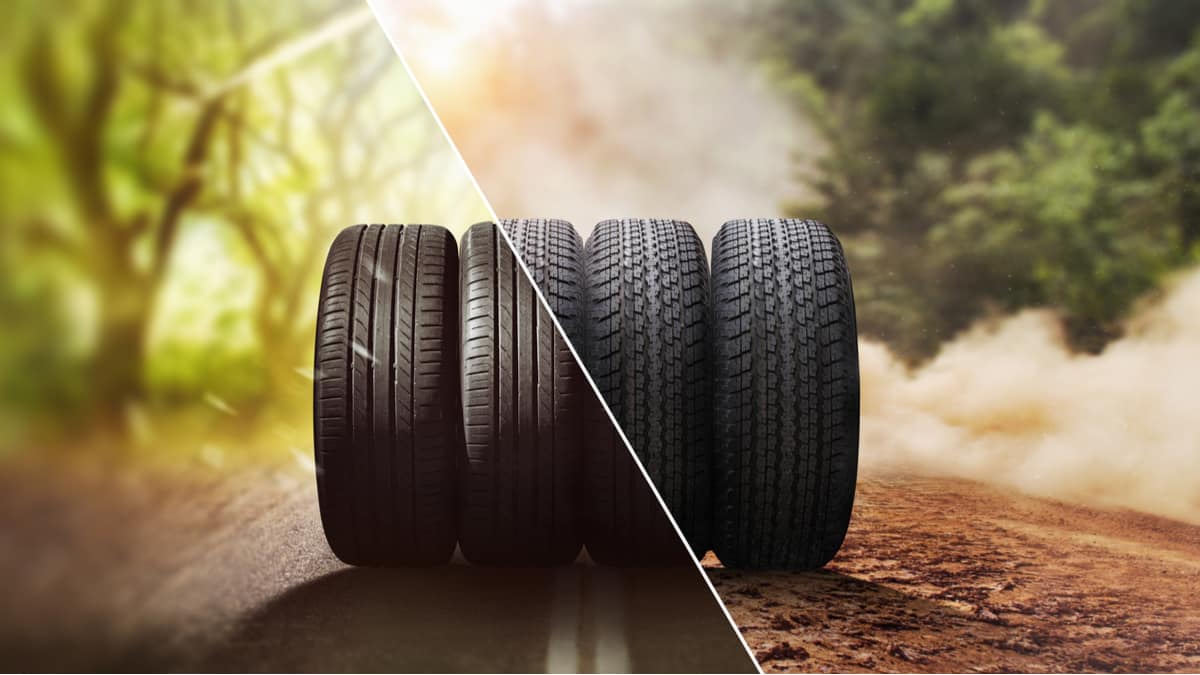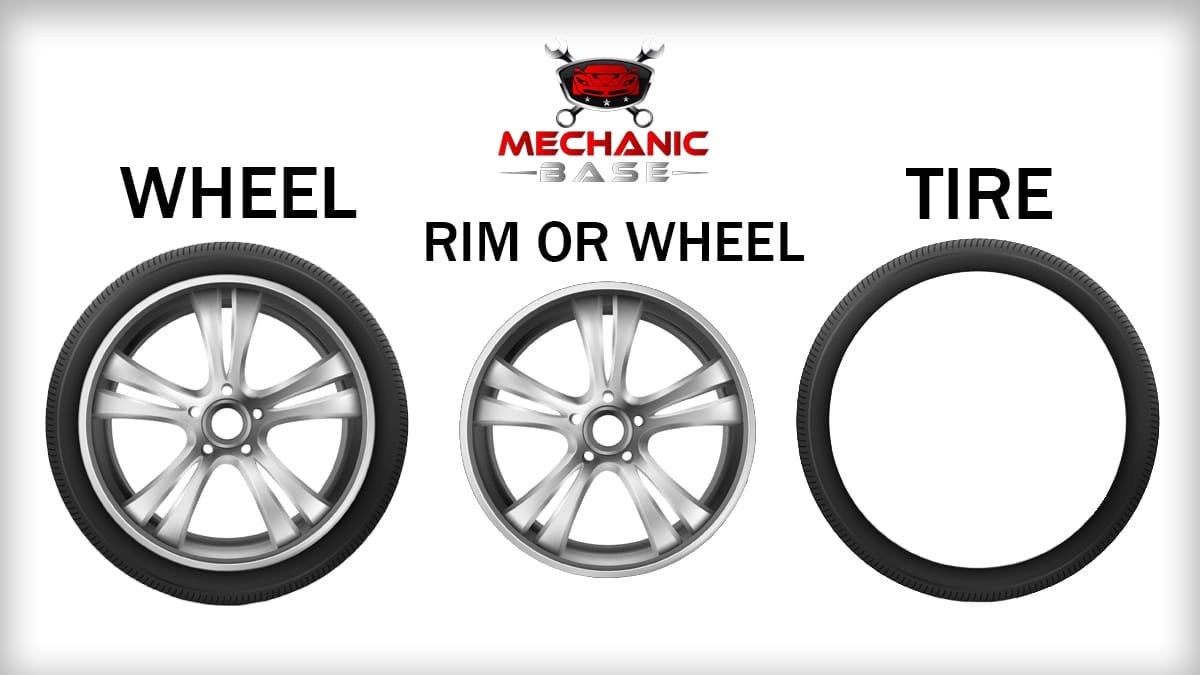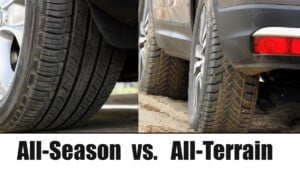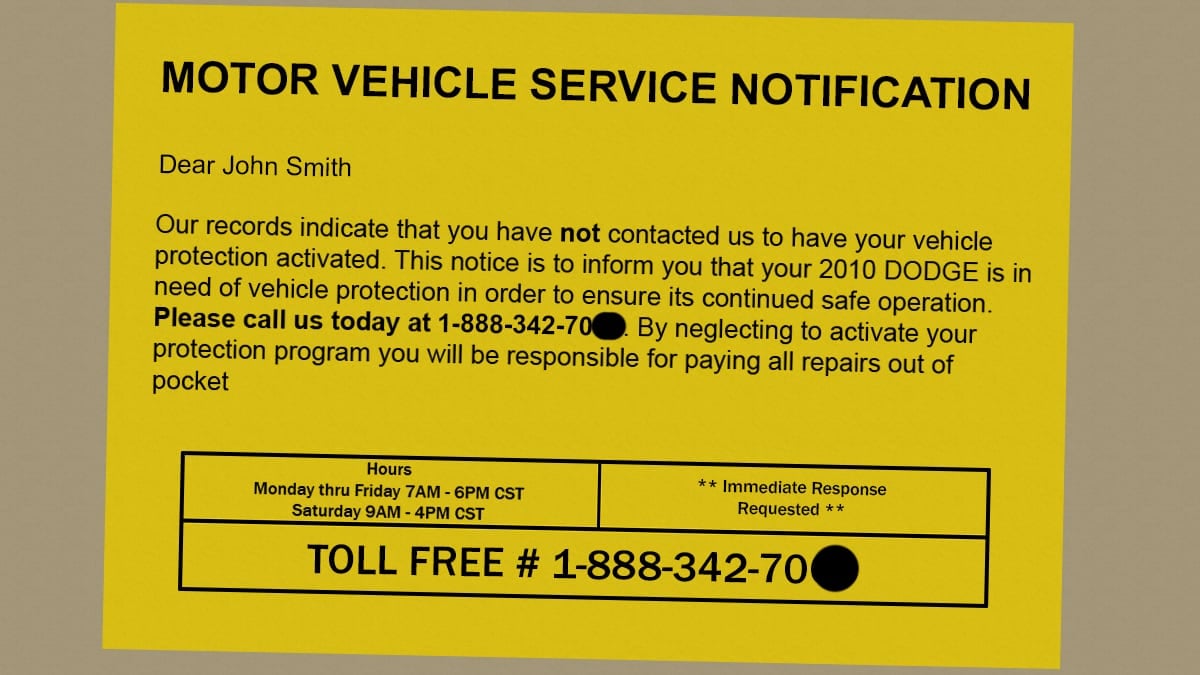It’s vital that you put the right size tires on your vehicle for proper operation. However, not everyone knows how to read the tire size. With so many numbers and letters listed on the sidewall of the tire, it can be difficult to decipher the meaning.
In this article, we examine all of the information listed on the tire sidewall. You will know how to read the tire size and all of its information by the time you are finished.
Tire Size Meanings
The three numbers you will find on the tire’s sidewall represent the width, height, and diameter of the tire, respectively. The width is measured in millimeters and indicates how wide the tire is from side to side. The height is measured in a height-to-width ratio. The diameter is measured in inches and tells you the size of the rim or wheel that the tire will fit onto.
For example, a tire with a width of 225, a height of 50, and a diameter of 17 would be considered a 225/50/17 tire.
Every tire sidewall contains the tire type, tire width, aspect ratio, and construction. It also contains the wheel diameter, load index, speed rating, DOT symbol, TIN, and UTQG information. This data must be used together to determine if it’s the right tire for your vehicle.
1. Tire Type
P225/65R17 95H
Most car tires have the letter “P” at the front of the tire size. This letter signifies that it is a P-Metric tire designed for the standards of passenger vehicles.
If you see the letters “LT” instead, it means Light Trucks. Tire manufacturers design these for the higher inflation needs required by some trucks.
There are also other types that are used, such as “T” for Temporary, “ST” for Trailer and “C” for Commercial. However, there’s also the chance that there’s no letter on the tire. If this is the case, it might have been made in Europe. Euro-metric tires are similar to our Passenger tires.
2. Tire Width
P225/65R17 95H
The tire is measured by its width. This measurement is given in millimeters, based on how much room there is between each sidewall. This can also be referred to as the section width.
In the tire size, the first three numbers refer to the width of the tire. As an example, if your tire size is P225/65R17, the width of the tire would be 225 millimeters.
3. Aspect Ratio
P225/65R17 95H
After the slash mark, the next number you will see is the tire’s aspect ratio. The aspect ratio of a tire is the height of the cross-section compared to the width. This two-digit number is found after the slash symbol in the tire size.
In the example used above, P225/65R17, the 65 is the aspect ratio. It shows that the height of the tire is equal to 65% of the width. This figure determines how well the vehicle handles your tires. The higher the number is, the longer the response time when turning, while the lower number indicates a faster response to a command.
4. Construction
P225/65R17 95H
Most passenger tires feature an “R” after the aspect ratio. This letter signifies that it is a Radial Tire. These tires are the most common on the road and are made by assembling piles of fabric, steel, and polyester, along with coated rubber, lying perpendicular to the direction the tire travels. This design provides the smoothest ride and longer tread life.
There can also be tires with a “D,” standing for Diagonal Piles. These are otherwise referred to as Bias-Constructed Tires, Bias Ply or X-Ply, Cross-Ply and Conventional Tires. You will find this type most commonly used with trailer or motorcycle tires.
Additionally, some tires feature an “F” before the construction letter. This letter is only found on run-flat varieties.
5. Wheel Diameter
P225/65R17 95H
It’s important to know what size wheel the tire is meant for. The final number in the sequence is the diameter of the wheel or rim diameter. This figure shows what size wheel should be used with the tire.
The measurement is determined by figuring out the space across the center, from one size to the next. Usually, this figure is listed in inches, such as 17 inches from our example, P225/65R17.
6. Load Index
P225/65R17 95H
The load index is the figure used to show the total weight the tire is capable of handling when it is at full inflation. The higher the number of the tire’s load index rating, the more weight you can put on the tires. However, you can’t easily tell how much weight it holds just by looking at this figure.
Instead, you need to reference a chart that shows you what the load index rating means. As an example, a load capability of 117 means that the tire can handle 2,833 pounds of weight. Most passenger vehicles use load indexes ranging from 70–125. See load index chart
7. Speed Rating
P225/65R17 95H
The speed rating or maximum speed rating is another figure that needs to be referenced with the help of a chart. This figure relates to the top speed capability you can use the tire at. Tires with higher speed ratings provide more control at higher speeds and can handle heat better.
The most common speed ratings for a family sedan, SUVs and van tires are S and T, translated as 112 or 118 mph. H (130 mph) is commonly used with passenger cars, SUVs, light pickup trucks, coupes and sports cars. Other light trucks use N, P, Q or R (87, 93, 99 and 106 mph).
If you drive a high-performance vehicle, you might see a V, W or Y (149, 168 or 186 mph). Almost all of the winter tires use either the Q, S or T speed rating. Of course, this is just the tire’s maximum speed capability and you should always follow the legal speed limits. See speed rating chart
8. DOT Symbol
Every tire sidewall used in the United States should have the DOT symbol located on the side. The DOT stands for Department of Transportation.
With this symbol, you know that the tire complies with Federal Motor Vehicle Safety Standards. Any reliable manufacturer uses the DOT symbol, so there’s nothing to worry about when you are buying a top brand.
9. TIN
Just like your car has an identification number, your tire also contains a serial number. The Tire Identification Number (TIN) tells you everything you need to know about the tire. This number is located after the DOT letters.
The TIN can be eight to 13 letters/numbers to identify the most important aspects of the tire. Not only will it reveal where the tire was made, but it also shows the manufacturer’s code plus the date the tire was manufactured.
10. UTQG
The UTQG stands for Uniform Tire Quality Grading. This rating system was made by the Department of Transportation, and it provides you with the data needed to purchase the best tires based on temperature capability, traction and treadwear.
The traction grade shows the wet traction capability of the tire as performed during controlled testing. The AA-rated tire provides the best traction when driving on wet roads.
The temperature grade shows the ability of the tire to handle and dissipate heat. The higher the temperature grade, the more capable it is of operating at faster speeds. A temperature grade of A can handle speeds over 115 mph.
The treadwear grade shows how the tire responded to government testing. It’s designed to reveal the expected wear of the tire’s tread. The government test course runs 6,000 miles, so it’s long enough to reveal how the tire should wear. A tire with a 150 grade would wear 1.5 times better than a similar tire with a 100 rating. With that in mind, a tire with a rating of 200 would last twice as long as that same 100-grade option.
Still, the wear of a tire is going to depend on far more than what this rating is. Tire performance relies heavily on how the vehicle is driven, the type of roads it is used on, and several other factors. The rating only shows what the tire is capable of.
RELATED: What is a Tire Sidewall Damage (& When to Replace the Tire?)
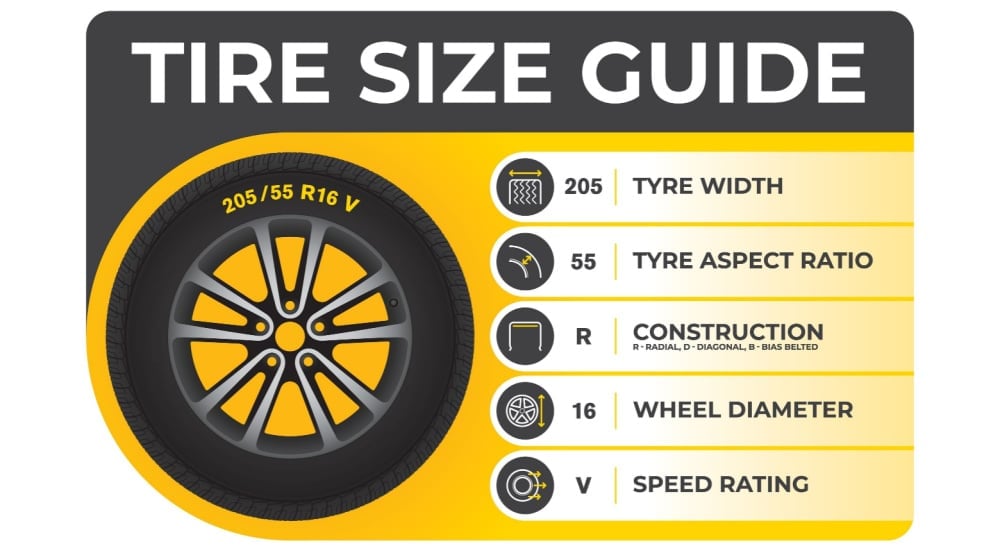
Is Tire Size Important?
The tires must fit your vehicle perfectly for proper operation. The first issue with improperly sized tires is the appearance. When you put on tires that are too small or too large for your vehicle, it isn’t going to look right.
However, there are more dangerous ramifications of using the wrong sized tires. The tires are responsible for supporting the weight of your vehicle and are the only aspect that is touching the road. To ensure your on-road safety, the tires must be rated for your vehicle, or you are putting yourself at risk.
If you use tires that aren’t meant for your vehicle, the handling becomes compromised. You might notice issues when you attempt to turn or you hit slick roads. Finally, the tires will also wear sooner when they aren’t right, causing you to spend more money on replacements.
Your car owner’s manual will tell you what tire size is appropriate for your vehicle. You can also find the information on the placard located inside the driver’s side door jamb.
Tire Size Examples Explained
We will evaluate two popular types of tires to show you how to read them based on the factors listed above. As we look at these examples, you should be able to figure out your own tire sizes using the same formula.
Our first example is with P225/65R17 100T. If your tire says this, you would evaluate it based on the following criteria.
- Tire Type: Because it has a P before the numbers, you know that it is a passenger tire. This is the most common found on the road.
- Tire Width: This tire measures 225 millimeters. This measurement is taken from sidewall to sidewall, estimated to be slightly more than ten inches. Also called section width.
- Aspect Ratio: The tire’s sidewall is 65% of the tire’s width. Knowing this, the sidewall is about 146 millimeters or about 5.75 inches.
- Construction: The R stands for Radial Tire. This is the most common tire type on the road.
- Wheel Diameter: The diameter measures 17 inches. This is measured from edge to edge, showing what size wheel you should put the tire on.
- Load Index: If the load index of this tire is rated at 100, the tire can carry up to 1,604 pounds.
- Speed Rating: This tire has a speed rating of T. That would mean it is built for speeds up to 118 mph.
As a review, this P225/65R17 100T tire is considered a passenger tire that contains a width of 225 millimeters. It features an aspect ratio of 65% with a radial construction. Plus, it features a 17-inch diameter that can carry up to 1,604 pounds and travel up to 118 mph.
Let’s look through one more example to ensure you get the point. For this example, we will use P275/55R20 111S.
- Tire Type: Because it has a P before the numbers, you know that it is a passenger tire. This is the most common type of tire found on the road.
- Tire Width: This tire measures 275 millimeters. This measurement is taken from sidewall to sidewall, estimated to be slightly smaller than 11 inches.
- Aspect Ratio: The tire’s sidewall is 55% of the tire’s width. Knowing this, the sidewall is about 151 millimeters or about 6 inches.
- Construction: The R stands for Radial Tire. This is the most common tire type on the road.
- Wheel Diameter: The diameter measures 20 inches. This is measured from edge to edge, showing what size wheel you should put the tire on.
- Load Index: If the load index of this tire was rated at 111, that tire can carry up to 2,403 pounds.
- Speed Rating: This tire has a speed rating of S. That would mean it is built for speeds up to 112 mph.
As a review, this P275/55R20 111S tire is considered a passenger tire that contains a width of 275 millimeters. It features an aspect ratio of 55% with a radial construction. Plus, it features a 20-inch diameter that can carry up to 2,403 pounds and travel up to 112 mph.
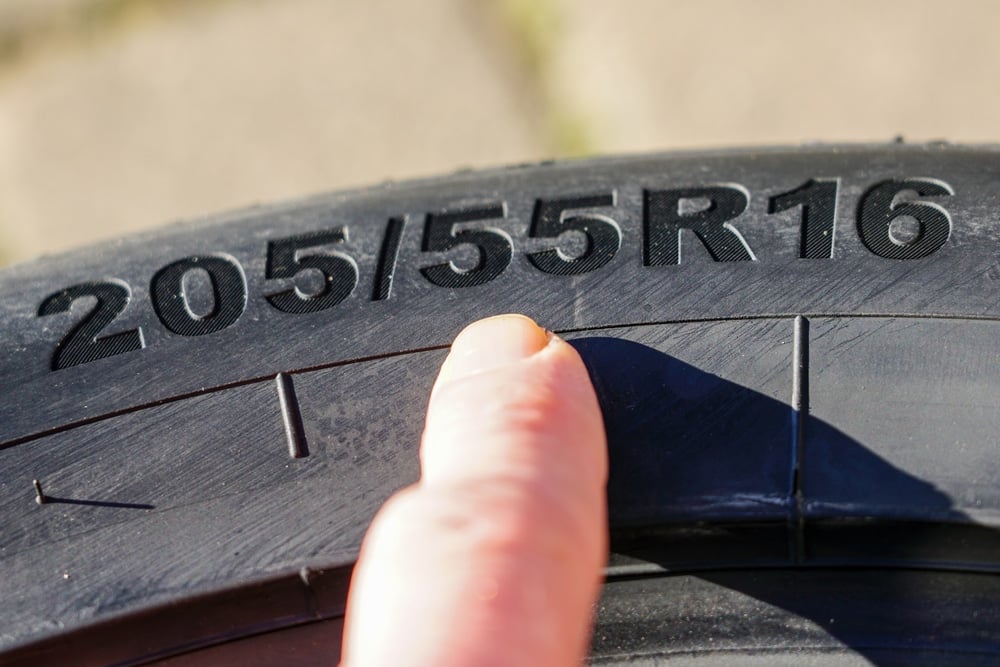
Where to Find The Tire Size?
Before you put new tires on your vehicle, you want to be sure you are choosing the right tire size. There are two ways to reference the tire size of your vehicle.
First, you can look at the tires that are currently on it. Matching this information is a good way to get the same tires on your vehicle. However, there’s a flaw with this method. If someone put the wrong tires on before you bought them, you may not know.
That’s why it’s always recommended to check the door jamb located inside the driver’s side. There is a placard that shows the appropriate tire size. You might also find it in the owner’s manual. These measurements are provided directly by the car manufacturer, so you know you can’t go wrong.
What do the 3 numbers mean on tire size?
The three numbers on tire size represent the width, height, and diameter of the tire, respectively. The width is measured in millimeters and indicates how wide the tire is from side to side. The height is measured in a height-to-width ratio. The diameter is measured in inches and tells you the size of the rim or wheel that the tire will fit onto.
For example, a tire with a width of 225, a height of 50, and a diameter of 17 would be considered a 225/50/17 tire.
How to read tire size on a truck?
Trucks usually use the same tire size system as cars. The first number in a truck tire size is the width of the tire in millimeters. The second number is the height, called the aspect ratio. The third number is the diameter of the wheel in inches. You can also find truck tire sizes in inches, which we explain further down.
How to read tire sizes in inches?
Tire sizes in inches can be a little different than tire sizes in millimeters. For example (35X12 50R18) – The numbers 35 and 12 refer to the diameter and the width of the tire, respectively, while 50 indicates the aspect ratio (the percentage of the sidewall height compared to the width). The final R18 denotes the rim diameter in inches, so, a 35X12 50R18 tire would be a 35-inch in diameter tire with a 12-inch width and an 18-inch rim diameter.
How to read a motorcycle tire size?
Motorcycle tire sizes are usually the same as car tire sizes. The first three digits represent the width of the tire in millimeters (mm). The second two digits after the slash mark represent the aspect ratio, which is the height of the tire’s cross-section to its width. Finally, the last two digits after the dash represent the diameter of the motorcycle wheel, in inches.
Tire Size Charts
Load Index Chart
| Load Index | Load (lbs) | Load Index | Load (lbs) |
|---|---|---|---|
| 71 | 761 | 100 | 1764 |
| 72 | 783 | 101 | 1819 |
| 73 | 805 | 102 | 1874 |
| 74 | 827 | 103 | 1929 |
| 75 | 852 | 104 | 1984 |
| 76 | 882 | 105 | 2039 |
| 77 | 908 | 106 | 2094 |
| 78 | 937 | 107 | 2149 |
| 79 | 963 | 108 | 2205 |
| 80 | 992 | 109 | 2271 |
| 81 | 1019 | 110 | 2337 |
| 82 | 1047 | 111 | 2403 |
| 83 | 1074 | 112 | 2469 |
| 84 | 1102 | 113 | 2535 |
| 85 | 1135 | 114 | 2601 |
| 86 | 1168 | 115 | 2679 |
| 87 | 1201 | 116 | 2756 |
| 88 | 1235 | 117 | 2833 |
| 89 | 1279 | 118 | 2910 |
| 90 | 1323 | 119 | 2998 |
| 91 | 1356 | 120 | 3086 |
| 92 | 1389 | 121 | 3197 |
| 93 | 1433 | 122 | 3307 |
| 94 | 1477 | 123 | 3417 |
| 95 | 1521 | 124 | 3527 |
| 96 | 1565 | 125 | 3638 |
| 97 | 1609 | 126 | 3748 |
| 98 | 1653 | 127 | 3858 |
| 99 | 1709 | 128 | 3968 |
Speed Rating Chart
| Symbol Speed | Speed (km/h) | Speed (mph) |
|---|---|---|
| A1 | 5 | 3 |
| A2 | 10 | 6 |
| A3 | 15 | 9 |
| A4 | 20 | 12 |
| A5 | 25 | 16 |
| A6 | 30 | 19 |
| A8 | 40 | 25 |
| B | 50 | 31 |
| C | 60 | 37 |
| D | 65 | 40 |
| E | 70 | 43 |
| F | 80 | 50 |
| G | 90 | 56 |
| J | 100 | 62 |
| K | 110 | 68 |
| L | 120 | 75 |
| M | 130 | 81 |
| N | 140 | 87 |
| P | 150 | 94 |
| Q | 160 | 100 |
| R | 170 | 106 |
| S | 180 | 112 |
| T | 190 | 118 |
| U | 200 | 124 |
| H | 210 | 130 |
| V | 240 | 149 |
| W | 270 | 168 |
| Y | 300 | 186 |
Now that you know how to read your tire size, you will be prepared for the next time you are about to buy new tires. Although there’s a lot of information on the sidewall of a tire, it’s not as complicated as it may seem.
In fact, once you know what to look for, understanding your tire size is pretty easy. By knowing how to read your tire size and what the numbers on the tires mean, you can now buy the perfect tires yourself and make sure you have the best tires for your car.
Sources
Learn more:
